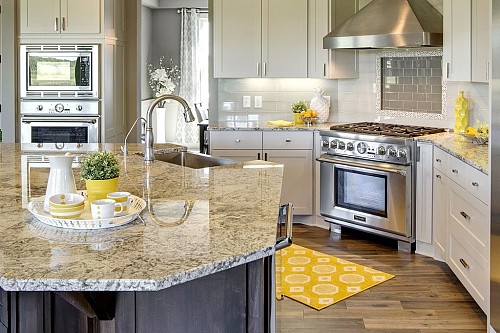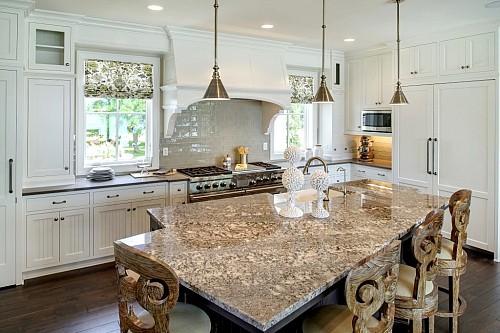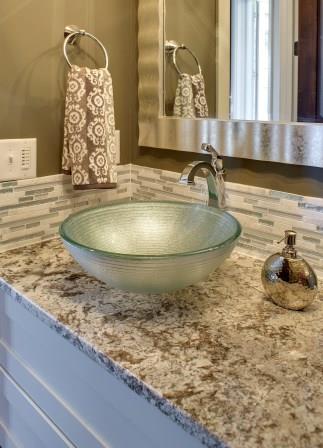Time For A New Look At Granite Countertops
 In NO way were granite countertops a contender for my last kitchen remodel. Quartz countertops were what I had my heart set on, and the only choice in the matter was what color and design of this then-brand-new engineered stone I was going to use.
In NO way were granite countertops a contender for my last kitchen remodel. Quartz countertops were what I had my heart set on, and the only choice in the matter was what color and design of this then-brand-new engineered stone I was going to use.
But that was then. This is now.
Now I’m in a new home, a new decade, and a new frame of mind. And when I look at countertops, granite is what keeps catching my eye. I’m attracted to granite countertops for their natural feel and intriguingly variegated patterns. (Blue-veined white granite is a particular favorite.) That's not to mention their heat and stain resistance.
However, granite countertops have been getting something of a bad rap lately. Some writers say they’re going out of style and make unfavorable comparisons to quartz. I happen to disagree; I believe that granite is a classy, classic material and that it’s very possible to make granite countertop installation look fresh and new.
Don’t just take my word for it, though. Read what Reid Kubesh, Director of Sales at Coldspring -- a leading natural stone quarrier and fabricator – has to say.
An Expert Opinion On Granite Countertops
- LAURA: What are consumers asking for these days – do they want a particular material, style, or color?
REID: In terms of granite vs quartz, material selection is about 50/50. Natural quartzites are probably about 5 percent.
Quartz that looks like marble is popular, and granite that is mostly white but with accent colors is just as popular.
Trendy colors right now are still whites and grays. Six or seven out of ten people are selecting these.
- LAURA: Please name the major pros and cons of granite countertops.
REID: Granite has many advantages. A polished, sealed granite is stain resistant, heat resistant, scratch resistant and very durable. The other advantage to granite is that it is very hard to replicate its beauty. No two granite slabs are exactly alike, meaning your kitchen would not look like your neighbor’s even if you both selected the same color stone.
A disadvantage of granite is that when it is not polished and sealed, it’s susceptible to staining. If your granite countertops are honed or leathered, a sealer must be applied every year to help prevent staining on certain colors. Although this process is very quick and easy, some homeowners consider it a hassle.

- LAURA: What is the major difference between granite and quartz countertops?
REID: Quartz is a manmade product and granite is natural stone. The main difference is going to be heat resistance. Quartz is not heat resistant due to the resin used to bind the materials together in the manufacturing process. (Editor’s note: Quartz is composed of 90-93 percent crushed stone and 7-10 percent non-organic resin, by weight.) A hot cookie sheet will stain or melt the resin it comes into contact with.
Quartz can only handle temperatures up to 100 degrees Fahrenheit, unlike granite, which tolerates much higher heat.

- LAURA: How can a homeowner make granite look fresh and modern today?
REID: In years past, polished was the only option people knew about for granite countertops. Now I would say people are much more into a honed or a leathered finish. Our customers want a more matte look rather than the traditional glossy, shiny polished finish.
- LAURA: What countertop material do you predict will be big in the 20s?
REID: We are seeing a switch back to more granite, due to the recent tariffs and lawsuits brought against foreign competition in the quartz market.
In terms of granite color, history and trends tend to repeat themselves and I wouldn’t be surprised to see the whites/grays trend out, with golds/browns becoming more popular once again.

Laura Firszt writes for networx.com.
Looking for a Pro? Call us (866) 441-6648

Remodeling Average Costs
Remodeling Contractors Experiences

From Hot Mess To Very Cool Tiled Bathroom Floors

A Local Pro To Install My Bathroom Floor Tile Was The Best Choice





